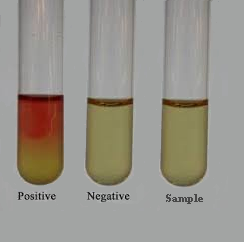

Cells or tissues over-expressing or lacking mRNA encoding the relevant antigens should be used as controls in this situation.Įxample 1 Validation of a monoclonal antibody (clone name LT19) raised against CD19 in cells known to express the endogenous target protein.Ī collection of several lymphoma or leukaemia-derived cell lines of different lineages (T, B cells and myeloid cells) was stained with the mAb LT19 using flow cytometry. Protein expression data may not, however, be available for many target antigens.
POSITIVE AND NEGATIVE CONTROL IN AN EXPERIMENT FULL
Although the use of cell lines can be a valuable indicator of the expression of the target protein, the use of positive and negative control tissue(s) is essential for the full validation of the antibody and the assessment of non-specific binding ( Example 3). Cell lines that endogenously express lack the protein of interest are widely used as controls in antibody validation ( Example 1 and Example 2). What can you use as a positive and negative control?Ī. If possible, you should confirm the expression of the required target molecule in your sample using more than one assay. You should always use several positive and negative controls at the same time. Your negative control should consist of tissues or cells where your target protein is known to be absent. Your positive control should confirm that your target antigen is expressed on the relevant cells and tissues. Good record keeping, observations, and notes will help you make a more thorough and reliable analysis of your data and will give more credibility to your results.Positive and negative controls for antibody validation When you perform any experiment, be sure to record all your findings, preferably in ink. Consistency when making measurements and collecting data is important to ensure accuracy, precision, and ultimately repeatability of your experiment. Once the experiment is designed, decide what type of data you need to collect and how you will collect it in order to evaluate your hypothesis. An experimental control can have an outcome similar to the experimental subject if the independent variable does not greatly impact it, whereas with a negative control, no outcome is expected at all.ĭetermining what types and how many controls to include in an experiment can affect the reliability and accuracy of your data and ultimately your conclusions. Sometimes an experimental control is also a negative control, depending on the expected outcome and type of experiment. This type of control is a parallel of the experiment, except no changes are made to any of the independent variables. This baseline data can be compared to the experimental data to see the relative effect (if any) of the independent variable(s) on the dependent variable. The three main types of controls are positive, negative, and experimental controls.Ī positive control is something known to produce a positive result and will often be included (especially for diagnostic tests) to ensure that a negative result is not due to experimental or reaction failure.Ī negative control is something known to produce a negative result and will often be included to ensure that a positive result is truly positive and not due to contamination or other interference.Įxperimental controls (or “control groups”) are used in controlled experiments to acquire baseline data. Different types of experiments may require different types of controls, depending on the testing procedures. Controls are used for a point of reference and they are often safeguards against internal factors that may influence the outcome of an experiment. ControlsĬontrols are the components and conditions that are known and kept constant during an experiment. Multiple independent variables can be changed if you are interested determining a combined effect. There are typically many independent and dependent variables to consider when performing an experiment, but it is often best to alter only one independent variable at a time to accurately gauge the effect of that variable on the dependent variable. Independent variables are factors that can be intentionally changed and their impact can be measured on the dependent variable.ĭependent variables are the outcomes or what happens as a result of the independent variable(s). There are both independent variables and dependent variables. Variables are the conditions and components that are changeable and controllable during an experiment. There are two important components to be considered: variables and controls. Proper experimental design is critical for obtaining usable, reliable, and applicable data. The best way to test a hypothesis is through controlled, systematic, and reproducible experiments.


 0 kommentar(er)
0 kommentar(er)
